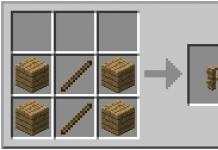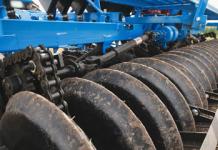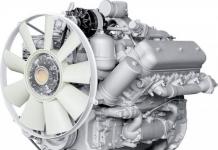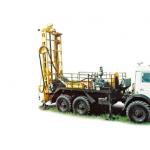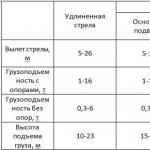When conducting electrical work, safety should always be the main criterion. After all, a lot depends on this, up to the life and health of a person. And the reason for such an event does not matter at all. In any case, it is necessary to choose the right protective devices. It is in connection with this that it will be necessary to calculate the machine in terms of power, taking into account some important nuances.
 Anyone who has dealt with electrical wiring has heard of circuit breakers or circuit breakers. First of all, a competent electrician will always advise you to treat the choice of such an important part of the electrical network with particular scrupulousness. Since later it is this simple device that can save you from many troubles.
Anyone who has dealt with electrical wiring has heard of circuit breakers or circuit breakers. First of all, a competent electrician will always advise you to treat the choice of such an important part of the electrical network with particular scrupulousness. Since later it is this simple device that can save you from many troubles.
It doesn’t matter at all what kind of electrical work is being carried out - whether new wiring is laid in a newly built house, the old one is being replaced, the shield is being modernized, or a separate branch is being laid for too energy-intensive devices - in any case, special attention must be paid to the selection of the machine in terms of power and other parameters.
Any modern machine has two degrees of protection. It means that he can help in two, the most common situations.

Thus, the machine is able to protect not only personal property, but in some cases life. Although for this it is necessary to carry out a competent calculation of the circuit breaker in terms of power and a number of other parameters. And also, you should not take the machine “with a margin”, since at critical values \u200b\u200bof the currents in the network it may simply not work, which is equivalent to its absence.
As for protecting a person from electric shock as a result of touching live parts, it is preferable to use an RCD.
Principle of operation
The main task of the protective switch is to cut off the supply of electric current from the supply cable to the consumer's network. This happens due to the releases located in the body of the machine. And there are two types of such parts:
- Electromagnetic, which is a coil, a spring and a core, which, when the rated currents are exceeded, is drawn in and disconnects the contacts through the spring. This happens almost instantly - from 0.01 to 0.001 seconds, which can provide reliable protection.
- Bimetallic thermal - are triggered by the passage of currents that exceed the limit values. In this case, the bimetallic plate, which is the basis of such a release, bends and breaks the contacts.

For a more reliable shutdown, in most modern models of machines, they try to use both types of releases.
Considering the variety of electrical networks and certain situations, vending machines can be of different types. The principle of their operation is no different - the same releases work, but depending on the situation and a number of other nuances, they use different variations.
So, for a standard single-phase network with a voltage of 220 volts, single-pole and two-pole AB are produced. The former are able to break only one wire - the phase. The latter can work with both phase and zero. Of course, it is preferable to use the second option. Especially when it comes to rooms with high humidity. Of course, a single-pole machine will do its job quite well, but situations may arise when the burnt wires are closed to each other. In this case, of course, the phase will be cut off, but the neutral wire will be energized, which can be extremely dangerous.

For three-phase networks with a voltage of 380 volts, three- or four-pole machines are used. They must be installed both at the entrance and directly in front of the consumer. As is clear, such machines cut off all three phases connected to them. In rare cases, it is possible to use one- or two-pole protective devices to cut off, respectively, one or two phases.
 Of course, any automatic machine will perfectly cope with the tasks assigned to it - this is beyond doubt if it is in good condition. But the fact is that it is necessary to select AB taking into account several parameters.
Of course, any automatic machine will perfectly cope with the tasks assigned to it - this is beyond doubt if it is in good condition. But the fact is that it is necessary to select AB taking into account several parameters.
If the selected automaton is too "weak", then constant false positives will occur. Conversely, a model that is too “strong” will be of rather dubious utility.
Load power
One of the possibilities to choose a protective device is the choice of the machine according to the load power. To do this, you need to know the value of the load current. And from these data, choose the appropriate denomination. Easiest (and more accurate) This can be done using Ohm's law according to the formula:
where P is the power of the consumer (refrigerator, microwave oven, washing machine, etc.), and U is the mains voltage.
For example, the consumer will be taken 1.5 kW, and the mains voltage is the usual 220 V. Having these data, substituting them into the formula, you get:
I \u003d 1500/220 \u003d 6.8 A.
In the case of a three-phase network of 380 volts, the voltage will be 380 V.
Based on Ohm's law, you can easily calculate the load power, from which to select the required value of the machine. However, one should not forget that, choosing AB in this way, it is necessary to add the load of all consumers.

There is another formula for choosing a circuit breaker by current, but it is a little more complicated, but the end result will be much more accurate. In practice, this is not important, but for informational purposes it is still worth quoting it:
The values of I, P, U will be the same as in Ohm's law, but cos φ is the power factor that takes into account the reactive component in the load. This value helps to determine table 6.12 of the normative document SP 31−110−2003 "Design and installation of electrical installations of residential and public buildings."
For example, the same data will be used, that is, the consumer is 1.5 kW, and the voltage is still the same 220 V. According to the table, cos φ will be equal to 0.65, as for computers. Hence:
I \u003d 1500 W / 220 V * 0.65 \u003d 4.43 A.
Choosing an automatic machine only by load power will be an unforgivable mistake, which can be expensive. After all, if you do not take into account the cable cross-section, then all meaning in the selection of the machine is lost. However, the obtained load values \u200b\u200band the AB rating can help in selecting the required cable.

To do this, you do not need to do any calculations, since it is enough to use table No. 1.3.6 and 1.3.7 of the PUE, where the concept of long-term permissible current means a voltage passing through the conductor for a long time that does not cause excessive heating. Simply put, this value can be taken as the calculated load power. And get the required cross section of copper or aluminum wire.
By short circuit current
Although some calculations were required to select a circuit breaker for power, they were extremely simple. This cannot be said at all about the calculations when choosing an automatic machine for short-circuit currents.

But when choosing the value of AB for a house, cottage, apartment or office, such calculations will be redundant, since the main indicator that especially affects the data is the length of the conductor. But in such situations, it is extremely small to significantly affect the result. Therefore, such calculations are carried out only when designing substations and other similar structures, where the length of the cables is significant.
Therefore, when choosing a circuit breaker, models with the designation “C” are usually purchased, which take into account the values of starting currents.
Denomination selection
The choice of circuit breaker rating must meet certain requirements. More specifically, the machine must work before the currents can exceed the allowable wiring values. It follows from this that the nominal value of the machine should be slightly less than the current strength that the wiring can withstand.
Selecting the right AB is quite simple. Moreover, there is a table of current ratings of automata, and this greatly simplifies the task.
From all this, you can create an algorithm, according to which it is easiest to choose the machine of the desired denomination:
- For a single section, the cross section and material of the wire are calculated.
- From the table, the value of the maximum current that the cable can withstand is taken.
- It remains only to select an automaton with a value slightly less than the long-term permissible current using the table.

The table contains five ratings AB 16 A, 25 A, 32 A, 40 A, 63 A, from which the protective device will be selected. Automata of smaller values are practically not used, since the loads of modern consumers simply will not allow this. Thus, having the necessary values, it is very easy to choose an automaton corresponding to a particular case.
To organize a trouble-free in-house power supply, it is necessary to allocate separate branches. Each line must be equipped with its own protection device that protects the cable insulation from melting. However, not everyone knows which device to purchase. Do you agree?
You will learn everything about the choice of automatic machines according to the load power from the article presented by us. We will tell you how to determine the rating to find the switch of the required class. Taking into account our recommendations guarantees the purchase of the required devices that can eliminate threatening situations during the operation of the wiring.
Power supply organizations carry out the connection of houses and apartments, performing work on bringing the cable to the switchboard. All activities for the installation of wiring in the room are carried out by its owners or hired specialists.
To choose an automatic machine to protect each individual circuit, you need to know its rating, class and some other characteristics.
Basic parameters and classification
Household machines are installed at the entrance to a low-voltage electrical circuit and they are designed to solve the following tasks:
- manual or electronic switching on or de-energization of the electrical circuit;
- circuit protection: current cut-off at a slight long-term overload;
- circuit protection: instantaneous current cut-off in case of short circuit.
Each switch has a characteristic, expressed in amperes, which is called ( I n) or “nominal”.
The essence of this value is easier to understand using the overrating factor:
K = I / In,
where I is the real current strength.
- K< 1.13: отключение (расцепление) не произойдет в течение 1 часа;
- K > 1.45: Shutdown will occur within 1 hour.
These parameters are fixed in clause 8.6.2. GOST R 50345-2010. To find out how long it will take to turn off at K> 1.45, you need to use a graph that reflects the time-current characteristic of a particular model of the machine.
If the current exceeds the nominal value of the circuit breaker by 2 times for a long time, the opening will occur within a period of 8 seconds to 4 minutes. Response speed depends on model setting and ambient temperature
Also, each type of circuit breaker has a current range ( I a), at which the instantaneous release mechanism is triggered:
- class “B”: I a = (3 * I n .. 5 * I n ];
- class “C”: I a = (5 * I n .. 10 * I n ];
- class “D”: I a = (10 * I n .. 20 * I n ].
Type “B” devices are mainly used for lines that are of considerable length. In residential and office premises, class “C” machines are used, and devices marked “D” protect circuits where there is equipment with a large starting current coefficient.
The standard line of household machines includes devices with ratings of 6, 8, 10, 16, 20, 25, 32, 40, 50 and 63 A.
Structural arrangement of releases
In modern there are two types of releases: thermal and electromagnetic.
The bimetallic release has the form of a plate made of two conductive metals with different thermal expansion. Such a design, when the nominal value is exceeded for a long time, leads to heating of the part, its bending and the operation of the circuit opening mechanism.
For some machines, using the adjusting screw, you can change the parameters of the current at which the trip occurs. In the past, this technique was often used to “fine” tune the device, but this procedure requires in-depth specialized knowledge and several tests.

By turning the adjusting screw (highlighted with a red rectangle) counterclockwise, you can achieve a longer response time of the thermal release
Now on the market you can find many models of standard ratings from different manufacturers, in which the time-current characteristics are slightly different (but still comply with regulatory requirements). Therefore, it is possible to choose a machine with the necessary “factory” settings, which eliminates the risk of incorrect calibration.
An electromagnetic release prevents the line from overheating due to a short circuit. It reacts almost instantly, but at the same time, the value of the current strength must be several times higher than the nominal value. Structurally, this part is a solenoid. The overcurrent generates a magnetic field that moves the core, opening the circuit.
Compliance with the principles of selectivity
In the presence of an extensive electrical circuit, protection can be organized in such a way that, in the event of a short circuit, only the branch on which the emergency occurs is disconnected. To do this, apply the principle of selectivity switches.

A visual diagram showing the principle of operation of the system of automatic switches with the implemented function of selectivity (selectivity) of operation in the event of a short circuit
To ensure selective shutdown, instantaneous cut-off machines are installed on the lower stages, opening the circuit in 0.02 - 0.2 seconds. The circuit breaker located on the higher stage either has a trip delay of 0.25 - 0.6 s or is made according to a special “selective” scheme in accordance with DIN VDE 0641-21.
For guaranteed security, it is better to use machines from one manufacturer. For circuit breakers of the same model range there are selectivity tables which indicate the possible combinations.
The simplest installation rules
The section of the circuit that needs to be protected by the switch can be single- or three-phase, have a neutral, as well as a PE (“ground”) wire. Therefore, automata have from 1 to 4 poles, to which a conductive core is connected. When conditions for tripping are created, all contacts are disconnected simultaneously.

The machines in the shield are mounted on a specially designated DIN rail. It provides a compact and secure connection, as well as convenient access to the switch.
The machines are installed as follows:
- single-pole per phase;
- bipolar for phase and neutral;
- three-pole for 3 phases;
- four-pole for 3 phases and neutral.
It is prohibited to do the following:
- install single-pole machines to neutral;
- put the PE wire into the machine;
- install three single-pole circuit breakers instead of one three-pole one, if at least one three-phase consumer is connected to the circuit.
All these requirements are spelled out in the PUE and must be observed.
In each house or room to which electricity is supplied, an introductory machine is installed. Its denomination is determined by the supplier and this value is specified in the contract for connecting electricity. The purpose of such a switch is to protect the site from the transformer to the consumer.
After the introductory machine, a counter (single- or three-phase) and is connected to the line, the functions of which differ from the operation of the automatic and differential switch.
If the room is wired into several circuits, then each of them is protected by a separate machine, the power of which is . Their ratings and classes are determined by the owner of the premises, taking into account the existing wiring or the power of the connected devices.

The electricity meter and circuit breakers are installed in a switchboard that meets all safety requirements and can easily fit into the interior of the room
When choosing a location for placement, it must be remembered that the properties of the thermal release are affected by air temperature. Therefore, it is desirable to have a rail with machine guns inside the room itself.
Calculation of the required denomination
The main protective function of the circuit breaker extends to the wiring, so the selection of the rating is carried out according to the cable cross section. In this case, the entire circuit must ensure the normal operation of the devices connected to it. The calculation of system parameters is not difficult, but many nuances must be taken into account in order to avoid errors and problems.
Determination of the total power of consumers
One of the main parameters of the electrical circuit is the maximum possible power of the consumers of electricity connected to it. When calculating this indicator, you cannot simply summarize the passport data of devices.
Active and nominal component
For any device powered by electricity, the manufacturer must indicate the active power ( P). This value determines the amount of energy that will be irretrievably converted as a result of the operation of the device and for which the user will pay according to the meter.
But for devices with the presence of capacitors or an inductor, there is another power with a non-zero value, which is called reactive ( Q). It reaches the device and returns almost instantly.
The reactive component does not participate in the calculation of the used electricity, but together with the active component forms the so-called “full” or “rated” power ( S), which gives a load on the chain.

cos(f) - a parameter with which you can determine the total (rated power) from the active (consumed). If it is not equal to one, then it is indicated in the technical documentation for the electrical appliance
Increased starting currents
The next feature of some types of household appliances is the presence of transformers, electric motors or compressors. Such devices consume starting (starting) current at the start of operation.
Its value can be several times higher than the standard values, but the time of operation at increased power is small and usually ranges from 0.1 to 3 seconds. Such a short-term surge will not lead to the operation of the thermal release, but the electromagnetic component of the switch, which is responsible for the short-circuit overcurrent, may react.
This situation is especially relevant for leased lines, to which equipment such as woodworking machines is connected. In this case, you need to calculate the amperage and, perhaps, it makes sense to use a “D” class machine.
Accounting for the demand factor
For circuits to which a large number of equipment is connected and there is no device that consumes the largest part of the current, use the demand factor ( ks). The meaning of its use is that all devices will not work at the same time, so the summation of the rated powers will lead to an overestimated figure.

The demand coefficient for groups of electricity consumers is set in clause 7 of SP 256.1325800.2016. These indicators can also be based on an independent calculation of the maximum power.
This coefficient can take a value equal to or less than one. Estimated power calculations ( P r) of each device occurs according to the formula:
P r = ks * S
The total rated power of all devices is used to calculate the circuit parameters. The use of the demand coefficient is advisable for office and small retail premises with a large number of computers, office equipment and other equipment powered from one circuit.
For lines with a small number of consumers, this coefficient is not used in its pure form. Those devices are removed from the power calculation, whose inclusion at the same time as more energy-consuming devices is unlikely.
So, for example, there is little chance of a one-time work in a living room with an iron and a vacuum cleaner. And for workshops with a small number of staff, only 2-4 of the most powerful power tools are taken into account.
Current Calculation
The choice of the machine is made according to the maximum value of the current strength allowed in the circuit section. It is necessary to obtain this indicator, knowing the total power of electrical consumers and the voltage in the network.
According to GOST 29322-2014, from October 2015, the voltage value should be equal to 230 V for an ordinary network and 400 V for a three-phase one. However, in most cases, the old parameters are still valid: 220 and 380 V, respectively. Therefore, for the accuracy of the calculations, it is necessary to take measurements using a voltmeter.
Another problem, especially relevant for, is the provision of power supply with insufficient voltage. Measurements on such problematic objects may show values that go beyond the range defined by GOST.
Moreover, depending on the level of consumption of electricity by neighbors, the voltage value can vary greatly in a short time.
This creates a problem not only for the functioning of devices, but also for. When the voltage drops, some devices simply lose power, and some that have an input regulator increase electricity consumption.
It is difficult to qualitatively calculate the necessary circuit parameters under such conditions. Therefore, either you will have to lay cables with a deliberately large cross section (which is expensive), or solve the problem by installing an input stabilizer or connecting the house to another line.

The stabilizer is installed next to the switchboard. It often happens that this is the only way to get the standard voltage values in the house.
After the total power of electrical appliances was found ( S) and the value of the voltage ( U), current strength calculation ( I) is carried out according to formulas that are a consequence of Ohm's law:
I f = S / U f for a single-phase network
I l \u003d S / (1.73 * U l) for a three-phase network
Here the index " f” means phase parameters, and “ l” are linear.
Most three-phase devices use the star connection type, and it is also according to this scheme that the transformer operates, which produces current for the consumer. With a symmetrical load, the linear and phase forces will be identical ( l = I f), and the voltage is calculated by the formula:
U l \u003d 1.73 * U f
The nuances of selecting the cable section
The quality and parameters of wires and cables are regulated by GOST 31996-2012. According to this document, specifications are developed for manufactured products, where a certain range of values of basic characteristics is allowed. The manufacturer is obliged to provide a table of correspondence between the cross section of the conductors and the maximum safe current.

The maximum allowable current depends on the cross-section of the conductors of the wires and the method of installation. They can be laid in a hidden (in a wall) or open (in a pipe or box) way.
It is necessary to choose a cable in such a way as to ensure the safe flow of current corresponding to the calculated total power of electrical appliances. According to the PUE (Electrical Installation Rules), the minimum used in residential premises must be at least 1.5 mm 2.
Standard sizes have the following values: 1.5; 2.5; 4; 6 and 10 mm 2 .
Sometimes there is a reason to use wires with a cross section one step larger than the minimum allowable. In this case, it is possible to connect additional devices or replace existing ones with more powerful ones without costly and time-consuming work on laying new cables.
Calculation of machine parameters
For any circuit, the following inequality must be satisfied:
I n<= I p / 1.45
Here I n is the rated current of the machine, and Ip- admissible current for wiring. This rule provides guaranteed tripping when the permissible load is exceeded for a long time.

The inequality “In<= Ip / 1.45” является основным условием при комплектовании пары “автомат – кабель”. Пренебрежение этим правилом может привести к возгоранию проводки
In this case, the sequence of actions is as follows:
- Calculation of the total current strength of electrical appliances connected to the network.
- The choice of an automaton with a nominal value not less than the calculated value.
- Selection of the cable section according to the nominal value of the machine.
- S = 4 kW; I = 4000 / 220 = 18 A;
- I n = 20 A;
- I p >= I n * 1.45 = 29 A; D \u003d 4 mm 2.
If the wiring has already been laid, then the sequence of actions is different:
- Determination of the permissible current with a known cross section and the method of wiring according to the table provided by the manufacturer.
- Selection of a circuit breaker.
- Calculation of the power of connected devices. Completing a group of devices in such a way that the total load on the circuit is less than the nominal value.
Example. Let two single-core cables be laid in an open way, D = 6 mm 2, then:
- I p = 46 A;
- I n<= I p / 1.45 = 32 A;
- S \u003d I n * 220 \u003d 7.0 kW.
In point 2 of the last example, there is a slight allowable approximation. The exact value of I n = I p / 1.45 = 31.7 A is rounded up to a value of 32 A.
Choice between multiple denominations
Sometimes a situation arises when you can select several machines with different ratings to protect the circuit. For example, with a total power of electrical appliances of 4 kW (18 A), wiring with a cross section of copper conductors of 4 mm 2 was chosen with a margin. For this combination it is possible to supply switches for 20 and 25 A.

If the electrical wiring diagram assumes the presence of multi-level protection, then you need to choose the machines so that the nominal value of the higher one (in the figure on the right is 25 A) is greater than that of the switches of lower levels
The advantage of choosing a switch with the highest rating is the ability to connect additional devices without changing the circuit elements. Most often, they do so.
In favor of choosing an automaton with a lower rating is the fact that its thermal release will respond faster to an increased current strength. The fact is that some devices may experience a malfunction, which will lead to an increase in energy consumption, but not to the value of a short circuit.
For example, a failure of a washing machine motor bearing will lead to a sharp increase in current in the winding. If the machine quickly reacts to exceeding the permitted values and turns off, then the motor will not burn out.
Conclusions and useful video on the topic
The design of the circuit breaker and its classification. The concept of the time-current characteristic and the selection of the nominal value according to the cable cross-section:
Calculation of the power of devices and the choice of the machine using the provisions of the PUE:
The choice of a circuit breaker must be taken responsibly, since the safety of the electrical system at home depends on it. With all the many input parameters and calculation nuances, it must be remembered that the main protective function of the machine extends to wiring.
Please write comments, ask questions, post photos on the topic of the article in the block below. Share useful information that may be useful to site visitors. Tell us about your own experience in choosing circuit breakers to protect country or home electrical wiring.
Modern systems for protecting electrical wiring from burnout and ignition involve the use of circuit breakers and are divided according to the type of network into single-phase and three-phase. In the private sector, in most cases, devices of the second type are used, so the correct calculation of the machine for power for 380 volts becomes relevant, which ensures the reliability and durability of the use of the electrical network.
Appointment and work
The first automatic device designed to protect an electrical circuit from overcurrent was invented by the American electromagnetist Charles Grafton Page in 1836. But only 40 years later, a similar design was described by Edison. . The modern type of protective devices was patented in 1924. Brown, Boveri & Cie Corporation of Switzerland.
The innovation of the design was the reusability of use due to the ability to turn on the module when it is triggered by pressing one button. The advantages over fuses were undeniable, while the accuracy of the machine was much better. When using the device in a network designed for 380 volts, all phases are turned off at once. This approach avoids the distortion of signal levels and the occurrence of overvoltages.
 The direct purpose of a three-phase circuit breaker is to turn off the line when a short circuit occurs in it or when the power consumption of the devices is exceeded. Protection modules belong to the group of switching equipment and due to their simple design, ease of use and reliability, they are widely used in both domestic and industrial power networks. Usually the device assumes manual control, but some types are equipped with an electromagnetic or electric motor drive, which makes it possible to control them remotely.
The direct purpose of a three-phase circuit breaker is to turn off the line when a short circuit occurs in it or when the power consumption of the devices is exceeded. Protection modules belong to the group of switching equipment and due to their simple design, ease of use and reliability, they are widely used in both domestic and industrial power networks. Usually the device assumes manual control, but some types are equipped with an electromagnetic or electric motor drive, which makes it possible to control them remotely.
Some users mistakenly assume that the machine protects the devices connected to it, but in fact this is not the case. It does not react in any way to the types and types of devices connected to it, and the only reason for its operation is overload and overcurrent. At the same time, if the machine does not turn off the line, the electrical wiring will begin to heat up, which will lead to damage or even ignition.
The choice of an automatic protection module is associated with the ability of an electric line to withstand a current of a certain value, which is directly related to the cable material and its cross section. In other words, when choosing a module, the main parameter is the power or maximum current, which leads to the operation of the machine.
Protection module design
Despite the wide range of products offered by various manufacturers, the designs of circuit breakers are similar to each other. The body of the device is made of a dielectric that is resistant to temperatures and does not support combustion. On the front panel there is a manual control lever, and the main technical characteristics are also applied.
Structurally, the body consists of two halves, twisted together by bolts. In the middle of it are the following elements:

 It is the designs of the releases that provide almost instantaneous operation of the circuit breaker. An electromechanical contact reacts to the occurrence in the circuit it protects of a current whose parameters exceed the nominal value. The design of the release includes an inductor with a core, the position of which is fixed by a spring, and already it is connected to a movable power contact. The solenoid windings are connected in series with the load. The thermal release is a compressed strip of two metals with different thermal conductivity (bimetallic plate).
It is the designs of the releases that provide almost instantaneous operation of the circuit breaker. An electromechanical contact reacts to the occurrence in the circuit it protects of a current whose parameters exceed the nominal value. The design of the release includes an inductor with a core, the position of which is fixed by a spring, and already it is connected to a movable power contact. The solenoid windings are connected in series with the load. The thermal release is a compressed strip of two metals with different thermal conductivity (bimetallic plate).
Operating principle
After connecting the power and load electric lines to the three-phase machine, it is turned on by moving the lever to the upper position. As a result, the lever engages through the latch with the closing contact. The formed connection is provided due to the displacement of the movable contact group relative to their holder.
Under normal circumstances, the current flows through the contact between the power contact and the moving contact. Then it enters the bimetallic plate and the solenoid winding, and from it it already gets to the terminal and the load connected to the machine.
 If a current with a value exceeding the allowable value begins to flow through the switch, then the bimetallic plate begins to heat up. Due to the different thermal expansion of the metals, it bends, eventually breaking the contact. The strength of the current at which the connection breaks depends on the thickness of the plate. The thermomagnetic release is characterized by slow operation, although it can detect even small changes in the magnitude of the current. Its setting is carried out at the factory by changing the distance between the plate and the moving contact. For this, an adjusting screw is used.
If a current with a value exceeding the allowable value begins to flow through the switch, then the bimetallic plate begins to heat up. Due to the different thermal expansion of the metals, it bends, eventually breaking the contact. The strength of the current at which the connection breaks depends on the thickness of the plate. The thermomagnetic release is characterized by slow operation, although it can detect even small changes in the magnitude of the current. Its setting is carried out at the factory by changing the distance between the plate and the moving contact. For this, an adjusting screw is used.
But for a current that instantly increases its value, the reaction rate of the bimetallic plate will be extremely low, so a solenoid is used along with it. In the normal state, the core is pushed out by the spring and closes the contact of the machine. With an abnormal value of the signal in the turns of the coil, the magnetic field rapidly increases, the flows of which draw the core inward, overcoming the action of the spring, and this leads to a circuit break.
The operation of the electromagnetic release occurs in a fraction of a second, while it does not react to currents slightly exceeding the rated ones. Simultaneously with the disconnection of the entire three-phase line, the lever also drops, which again needs to be moved to the upper position to connect the load to the network.
Device specifications
The correct selection of a 3-phase machine is not only in determining the conditions for its operation, but also in terms of power and type of load that will be connected to it. Incorrectly selected power of the module leads to a deterioration in the protection of the electrical wire, while such a device itself can become a source of an emergency.
But still, no matter how important it is to choose the right power, automatic devices are also characterized by other technical parameters that affect their operation. The main ones include:

In addition to technical parameters, automatic devices are also characterized by quality indicators. The most common ones include the type of drive, the method of connecting external conductors, the cut-off design, and others.
Power selection
There are two ways to determine the required power for a 3-phase machine. At the same time, one complements the other, and does not exclude it. The first method is associated with finding the total value of the energy consumed and the load, and the second - with the cross section of the electrical wiring.

Based on the definition that the machine does not protect the equipment, but the electrical wiring, it is necessary to select the power, focusing on the parameters of the latter. This is true, but only until the network upgrade is planned. For example, the existing wiring in the house is designed for 1.5 squares. According to the technical specifications, copper wiring of this diameter can withstand a long-term current of not more than 10 amperes. Accordingly, the maximum simultaneous energy consumption of devices connected to the machine output should not exceed 3.8 kW. This value is obtained from a simple formula for finding power - P \u003d U * I, where:
- P - the highest allowable power consumption, W;
- U - voltage of a three-phase network, 380 volts;
- I is the maximum current that the wiring can withstand, A.
The resulting number indicates that the total load connected to the line at the same time should not exceed this value, i.e. when the 2 kW boiler is turned on, nothing bad will happen. But if you connect a 3 kW electric furnace to this line, then the wiring will not stand it and catch fire, therefore, to prevent an accident, you must install a 10 A automatic machine, which allows you to load the line up to 2.2 kW.

The advantage of using a three-phase machine is that three lines can be connected to it at the same time, while the value of the rated current will be determined by summing the powers of all phases. Thus, for a 380 volt machine, it will be 6.6 kW, and in the case of connecting a triangle-type load, it will be 11.4 kW. That is, for the given example, if it is not possible to separate the line to different phase outputs of the protection device, you will need to purchase a 6 A machine.
If it is planned to upgrade the wiring or use a thick cable, then the calculation can be made based on the power consumption of the load. For example, if the load of each phase does not exceed 4 kW, then the rated current is calculated as the sum of the powers plus 15–20% of the margin (I \u003d 4 * 3 \u003d 12 A + margin \u003d 14 A), so the most suitable device in this case will be an automatic at 16 A.
Nuances in the calculation
 To simplify the determination of power as a margin, it is customary to use not a percentage, but a multiplication by a coefficient. This additional number is considered to be equal to 1.52.
To simplify the determination of power as a margin, it is customary to use not a percentage, but a multiplication by a coefficient. This additional number is considered to be equal to 1.52.
In practice, it is rarely possible to load all three phases equally, therefore, when one of the lines consumes a lot of energy, the circuit breaker rating is calculated based on the power of this particular phase. In this case, the largest value of energy consumed is taken into account and multiplied by a factor of 4.55, and then it will be possible to do without the use of tables.
Thus, when calculating the power, first of all, the parameters of the electrical wiring are taken into account, and then the energy consumed by the protected automatic machine of the electrical equipment. Here, the correct remark from the rules for the installation of electrical installations (PUE) is taken into account, indicating that the installed circuit breaker must protect the weakest section of the circuit.
Circuit breaker- a device that provides protection for your home, electronics and your loved ones from electric shock. Under normal conditions, when the operation of all devices and wiring is in normal mode, the switch conducts electricity through itself. But in the case when, for one reason or another, the current strength exceeded the nominal values \u200b\u200b(the load is connected more than the calculated one, a short circuit occurred due to a malfunction of electrical appliances or electrical circuits), the circuit breaker releases are triggered and open the circuit.
There are usually two types of releases in modular circuit breakers:
- Thermal release - triggered by overload currents. Structurally, it is a bimetallic plate, which straightens when heated due to the properties of the material. Depending on the value of the rated current, the heated part of the plate is regulated. Accordingly, the response speed of the machine is directly proportional to the strength of the current passing through the plate.
- An electromagnetic release is a device that operates at short-circuit currents that are a multiple of the rated current of the circuit breaker.
To select a modular circuit breaker
you need to decide on the following parameters:
Number of poles of the machine
- Single-pole circuit breakers are installed in a single-phase circuit. In this case, single-pole circuit breakers are installed directly on the phase, and protect outgoing lines, usually socket or lighting lines.
- Three-pole switches are installed in a three-phase network, usually as introductory circuit breakers or to protect three-phase consumers.
Circuit breaker overload current
Usually, the introductory machine is set to current, according to the allocated power for the apartment or up to.
With a single-phase network
I \u003d P / U, for example, 10 kW is allocated for an apartment, which means we set the introductory machine to 10000W / 220V = 45.5, round it up to the nearest smaller = we take a machine for 40A.
With a three-phase network
I \u003d P / U * 1.7 where 1.7 is the root of 3. Let's say 30 kW -30000W / 380V * 1.7 \u003d 45.5 is allocated for an apartment, and we select a three-pole machine for 40A)
For the selection of automatic machines on outgoing lines, it is necessary to choose depending on the cross section of the wire that is installed on the protected line. (If you have several consumers on this line).
In the event that one consumer (for example, a water heater) is installed on the protected line, an automatic machine is installed based on the power of the device.
|
Conductor cross section, mm |
Current *, A, for wires and cables |
||
|
single-core |
two-core |
three-core |
|
Type of short-circuit tripping characteristic
- В 3-5 are designed to protect active loads and long lighting lines with TN and IT grounding systems (sockets, lighting).
- C 5-10 are designed to protect circuits with active and inductive loads with low impulse current (for office and residential premises)
- D 10-20 is used for loads with high impulse (starting) currents and high switching current (low-voltage transformers, lightning arresters, lifting mechanisms, pumps)
- Z 2-3 electronics
Usually, circuit breakers with characteristic C are installed in the apartment.
Maximum breaking capacity (PKS) of automatic machines
The maximum electric current that the circuit breaker can trip. Here the principle is as follows: PKS is calculated from the maximum current that can occur when the outgoing wires are short-circuited. The introductory machine to the apartment must be at least 6 kA according to GOST, circuit breakers for the socket group and lighting can be 4.5 kA. In Europe, 4.5 kA circuit breakers are prohibited.
The number of machines.
Usually, an introductory machine is installed in the switchboard, an machine for outlet lines for 2-3 rooms, an machine for lighting lines (probably better, one machine per room), separately for a machine for powerful electricity consumers, a heater, a washing machine, etc.
When completing our customers, we usually recommend modular circuit breakers manufactured by ABB S200 series (PKS 6kA) or or . When building new houses, builders usually install IEK machines. Therefore, if IEK machines are installed in your new apartment, then you can guess what kind of wiring you have installed inside the walls, the brand and quality of concrete, etc.
A home master who has started repairing or manufacturing electrical wiring for his premises is sure to face the issue of protecting his electrical equipment from preventing the development of possible emergencies in it.
This issue can be solved by circuit breakers that provide three functions:
1. convenient manual switching of connected circuits with power supplies;
2. reliable transmission of the load current in the operating mode;
3. protective automatic shutdown in case of accidents.
It is no secret that any such device is created by the manufacturer to provide certain technical capabilities and has different characteristics. Therefore, there are a lot of such designs, and for each specific workplace it is necessary to select the optimal machine.
Well, now let's move on to the selection rules, dividing them into nine successive stages.
Calculation of the rated current. Stage #1
The circuit breaker is usually installed inside the switchboard at the entrance to the house, apartment or garage and cut into the phase conductor. Through this machine, along the mounted wires, the current of the connected load passes, which is created by working electrical appliances.
It is this current in the operating mode that the circuit breaker must reliably pass, and if it is exceeded, open its power contact, de-energizing the circuit. At the same time, it is important that a balance is maintained between the conductive properties of the electrical wiring and the connected devices.
For example, copper wiring with a cross section of 1.5 mm square can provide reliable power supply to consumers with a total power of up to 1 kW. If an electric heater is connected to it, taking 3 kW from the network, then no circuit breaker in this situation can cope with the function of protection and normal power supply.
Indeed, by selecting the machine for a load of 1 kW, we will protect the wiring, we will not let it overheat and fail due to increased currents. However, the electric heater will not work - the protection will immediately automatically remove power every time it is turned on.
If you choose a circuit breaker for a heater load of 3 kW, then its equipment will work, but only until the electric wires that supply voltage burn out. And it will happen pretty quickly.
The given example demonstrates that the issue of balancing the electrical circuit connected to the machine must be analyzed and ensured at the stage of the project work before choosing a specific model of protective devices.
In doing so, it is best to perform the following three tasks in stages:
2. select the rating of the circuit breaker from a range of standard currents based on the calculation. In this case, the rounding up method is used;
3. determine the material and cross-section of wires that will transfer the load from the machine to consumers based on the use of PUE tables.
The picture below presents the main technical recommendations for addressing each of these issues.

Selection of the circuit breaker according to its time-current characteristic. Stage #2
The dependence of the speed of removing power from the load by the electromagnetic release on the value of the excess of the rated current in the controlled circuit is one of the important indicators of the machine. According to this criterion, they have six classification groups, but only three of them are suitable for the conditions of a house, apartment and garage.

These are the classes:
"B" when the load is old electrical wiring, incandescent lamps, heaters, electric stoves or ovens;
"C" if washing and dishwashers, refrigerators, freezers, air conditioners, office and home socket groups, lighting discharge lamps with increased starting current are used in the premises;
"D" - to ensure reliable operation and protection of powerful compressor units, pumps, processing machines, lifting mechanisms.
Reliable shutdown of overcurrent by an electromagnetic release occurs when I exceeds the nominal value for the classes:
D - 10÷20 times.
Currents greater than 10% of the rated value will also be turned off by these machines due to the operation of bimetallic plates operating on the thermal principle. But, their time cannot always ensure safety. Therefore, class D protection cannot be used instead of C, or even more so B.
Selection of the circuit breaker according to the principle of selectivity. Stage 3
When choosing a protective device, it should be understood that it does not work alone in the electrical circuit, but in combination with other machines. For them, their own, specific sequence of operations is created, called selectivity or selectivity. It is important to comply with it for the reliable supply of electricity to all consumers.
The principle of selective operation of the switches is demonstrated by the picture, which shows that in the event of a short circuit in a device connected to a socket, an emergency current will pass through the automata AB1 of the house shield, AB2 of the driveway and AB3 of the apartment shield.

At the same time, they must be selected so that the malfunction is quickly eliminated by the work of the AB3 automatic machine closest to the place of disconnection, and the rest continue to work to supply all the electrical consumers connected to them.
During the design of the configuration of electrical protection circuits, they are always redundant, considering that there can be no absolute reliability. Someday, the AB3 circuit breaker may fail to work for various reasons. Therefore, it must be insured by the closest AB2 to it. In the event of a breakdown, it will be the turn of AB1. And so on…
As an addition, we present the design of the selective machine, which is installed in the main switchboard. Such special selective switches make it possible to provide a time delay for operation of the order of 0.25÷0.6 seconds.

They have prepared 2 paths for the passage of current:
basic;
additional.
They have the same elements for the operation of thermal releases and the main contact block.
A similar selective automaton is installed in front of the outgoing one, and its main channel works for the usual shutdown of an accident. In the additional one, a resistor is included, which provides a slight decrease in current and, accordingly, a time delay for operation.
If the outgoing automaton eliminates the accident, then the selective one does not turn off, but remains in operation through an additional contact, and after the main bimetal has cooled down, through its channel. When the outgoing automaton does not cope with its task, then its work is reserved by the second additional chain.
Determination of the limiting switching capacity of contacts. Stage 4
This characteristic determines the value of the maximum current in amperes that the circuit breaker is able to reliably break in the event of an emergency. If this value is exceeded in practice, then the protection of the network may not be fulfilled, and the machine itself will simply burn out from the excessive arc power.
One of the decisive parameters for choosing a PKS machine is related to the material of the used wires in the supply cables and the distance of the object from the transformer substation.

In addition to the limiting capacity, the technical documentation also indicates the switching durability, which determines the number of operation cycles under normal conditions before the mechanism wears out.
Tripping mechanism current limiting class. Stage number 5
This parameter is indicated on the case of most of the highest quality models and characterizes the speed of shutdown of the emergency mode by electromagnetic cutoff in relation to the duration of a segment of one half-cycle of a standard sinusoid.

The current limiting class is indicated by the numbers 1, 2, 3, which are the denominators of the fraction with the numerator 1.
An automaton with class 2 should begin to respond to a malfunction during 1/2 half-cycle, and the third class - 1/3. This means that the higher the current limiting factor, the faster the accident is eliminated and the protected equipment is exposed to less heat.
When the electric current of the accident breaks, an arc occurs, which is extinguished by a special device. The final interruption time of the malfunction by the automatic machine of the 3rd class is about 2.5 ÷ 6 milliseconds, the 2nd - 6 ÷ 10, and the 1st - >10.
Please note that class 3 models do not allow the fault current to reach its peak maximum. Therefore, their choice is the most optimal.
Checking the circuit breaker by the resistance of the phase-zero loop. Stage 6
It is better to entrust this question to specialists of measuring electrotechnical laboratories. The technology and methodology for its implementation are outlined.
Now let us briefly recall that the term phase-zero loop means the complete section of the electrical circuit from the winding of the power supply transformer located at the substation to the final consumer outlet.

This circuit has electrical resistance and influences the choice of protective devices because this value limits the maximum current of the resulting short circuit.
For example, the measured loop impedance is 1.2 ohms. The voltage in the apartment wiring is 220 volts. If you short-circuit the socket contacts with a metal jumper, then according to Ohm's law, you can determine the current that has arisen.
Ikz \u003d 220 / 1.2 \u003d 183.3 (3) A.
At the design stage of electrical wiring, this value is determined theoretically from calculation tables.
For example, protections are selected for a garage where metalworking machines are planned to be used. Therefore, according to all previously assessed indicators, a 16-ampere class D automatic machine was selected.
The breaking capacity of its electromagnetic release is calculated in accordance with the requirements of the PUE according to the formula:
I \u003d 1.1x16x20 \u003d 352 A.
16 - rated current of the machine;
20 - maximum characteristic of the tripping current by the electromagnetic release;
1.1 - 10% margin.
The calculation showed that the maximum short circuit current in the circuit can be no more than 183 amperes, and the selected circuit breaker operates at a short circuit of 352 A. In other words, the current cutoff for most accidents will simply not work for this model.
Therefore, the machine is selected incorrectly. It needs to be replaced. There is another alternative - the modernization of electrical wiring in order to reduce its electrical resistance.
Number of poles. Stage 7
In a single-phase circuit, a two-pole circuit breaker is installed inside the input shield to ensure complete phase and zero voltage removal from the powered circuit. In other cases, single-pole models are used that break the phase potential.

A four-pole machine in a three-phase network allows you to switch three phases and a working zero at once. But, in no case should they break the protective PE conductor.
In other cases, when the working neutral conductor does not need to be switched, it is enough to choose a three-phase model.
Extra options. Stage 8
This includes features such as:
the magnitude of the voltage of the supplied network;
frequency of industrial oscillations in hertz (usually 50 or 60);
degree of protection of the body according to IP classes;
execution for operation at the worsened temperature.
They also need to be paid attention to, especially if difficult working conditions are planned for the machine.
Brand choice. Stage 9
This final point is usually important when not one protective device is purchased, but a whole series of them for electrical work in one house. Here it is recommended to purchase reliable models of well-known manufacturers, taking into account purchasing opportunities.
Consider the more severe operating conditions of circuit breakers in cold or poorly heated garages and similar areas.
In conclusion of the article, I would like to draw attention to one very important stage of working with a circuit breaker, which is often forgotten. This is a loading or, in other words, an electrical verification of all the technical characteristics declared by the manufacturer from an external source in real working conditions of the test with fixing the results and drawing up a protocol.
It is carried out by electrotechnical laboratories on their equipment. Such an independent check makes it possible to identify all the malfunctions that could appear in the machine after its transportation or long-term storage, including factory defects.
